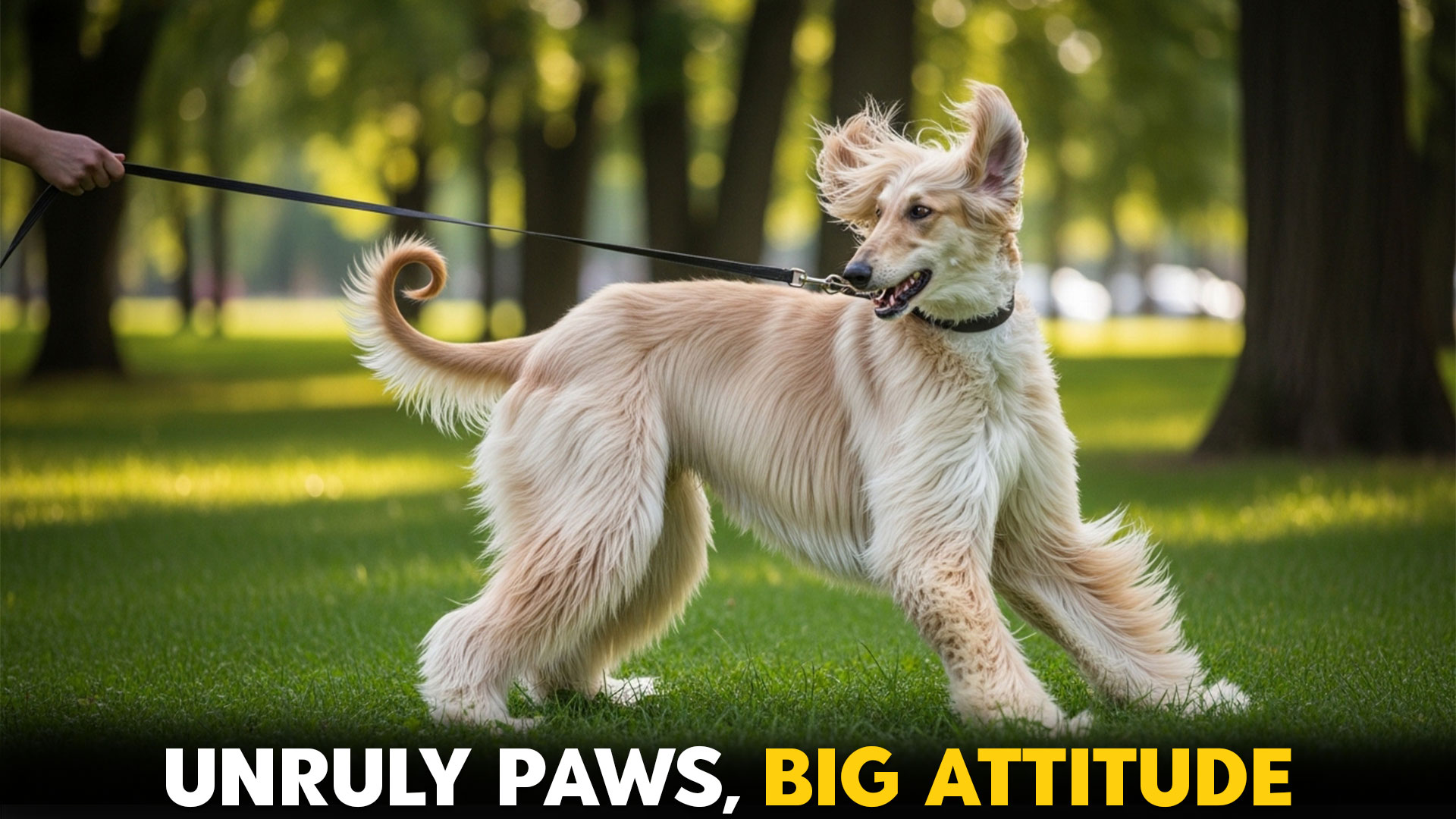You call your dog’s name once, then twice, then three times. Instead of coming to your side, he glances back with a spark of defiance and trots the other way.
For some owners, this scene is all too familiar. No amount of treats, toys, or firm voices can keep certain dogs focused when their minds are set elsewhere. While every dog has a personality of its own, some breeds have gained a reputation for testing boundaries more than others.
They may be lovable, loyal in their own way, yet infuriating when it comes to following simple instructions. Living with them means learning to accept independence along with mischief.
In this article, we’ll uncover the worst-behaved dog breeds that won’t listen to commands, helping you understand why they act this way and what makes them both challenging and unforgettable companions.
Key Takeaways
Training books make it sound easy, but some dogs laugh in the face of obedience drills.
Afghan Hounds act as if commands are optional, while Parson Russell Terriers prefer chasing trouble over following rules.
Then come Huskies, masters of escape, and Shiba Inus, whose independence borders on feline.
This lineup shows why “worst behaved” can also mean the most spirited companions to share a home with.
Worst Behaved Dog Breeds Who Won’t Listen To Commands
1. Afghan Hound
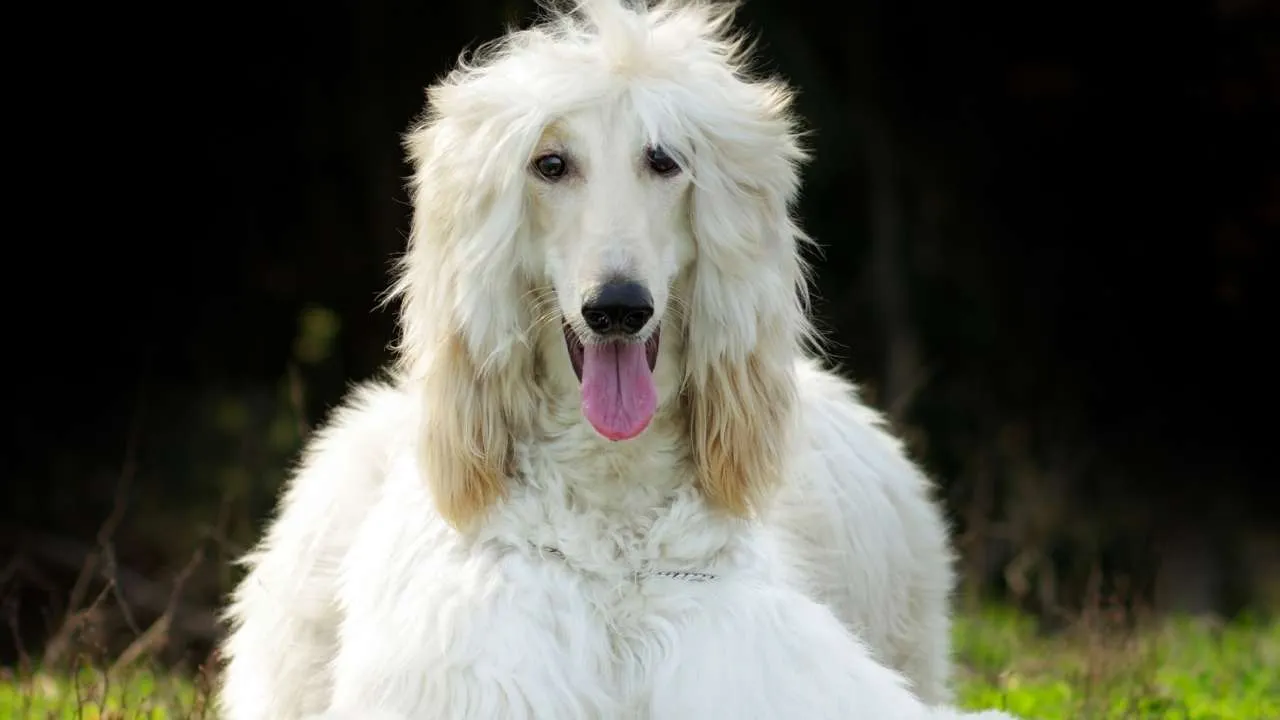
The Afghan Hound is celebrated for its silky coat and graceful stride, but their elegance comes with an independent streak. They were bred to chase prey across rugged terrains, a history that still shows in their strong-willed nature. This makes them less eager to respond instantly to commands.
Intelligence That Resists Routine
Afghans are intelligent but selective about when they choose to listen. Their independence often gives the impression of aloofness during training sessions. Some traits that reflect this behavior include:
Quick boredom with repetitive drills
Strong hunting instincts distract them easily
A preference for working on their own terms
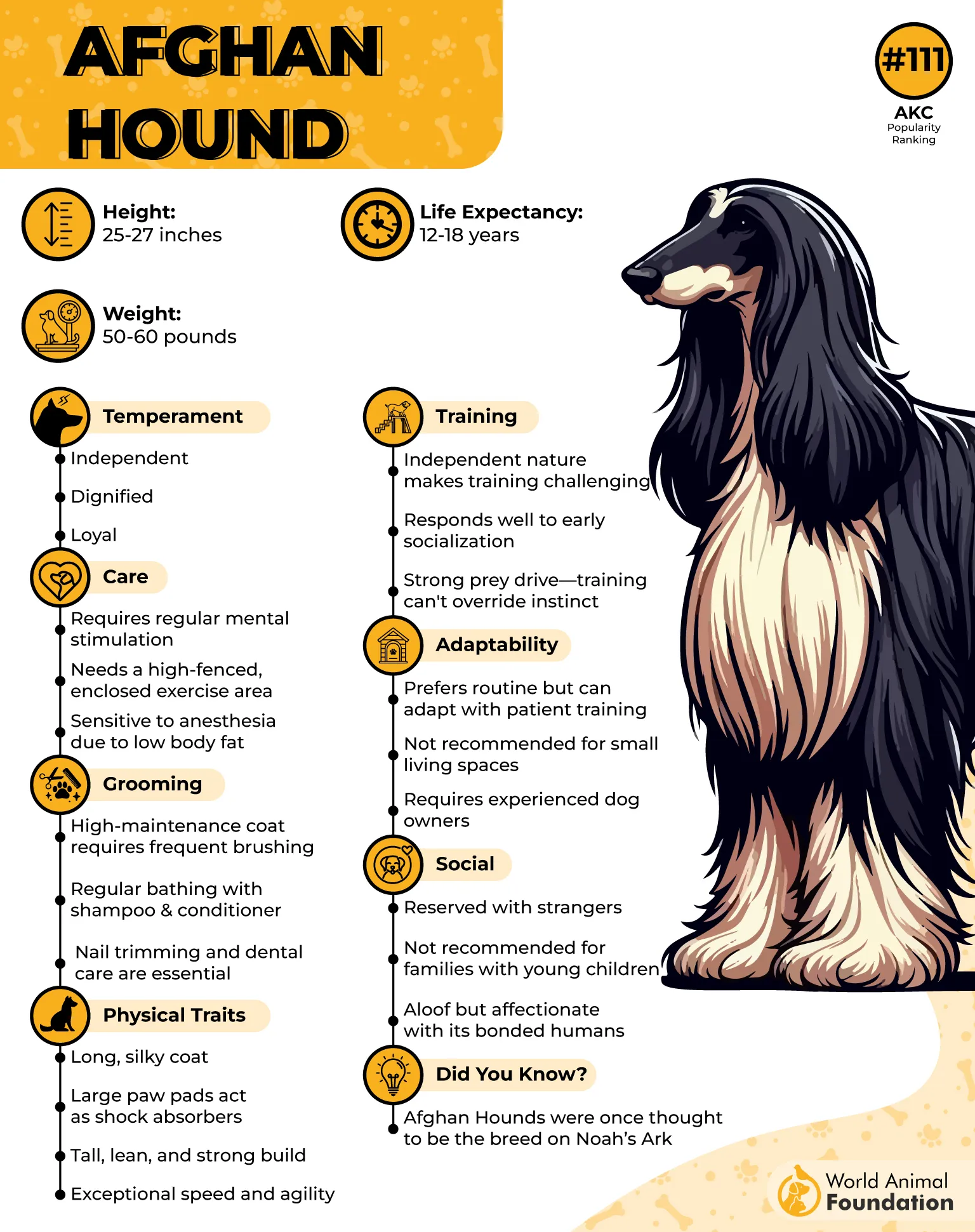
Training Challenges for Handlers
Professional trainers often describe Afghan Hounds as one of the most challenging breeds to teach obedience. Their natural grace can shift into aloofness, especially if the task doesn’t interest them. Patience and consistency are vital, yet even then, these dogs may prioritize instincts over commands.
Beauty That Commands Attention
Their glamorous coats and striking appearance often overshadow their training difficulties. This contrast is what makes them both admired and misunderstood. Families often adore them for their visual charm, while discovering firsthand the persistence needed to manage their independent mindset.
2. Parson Russell Terrier
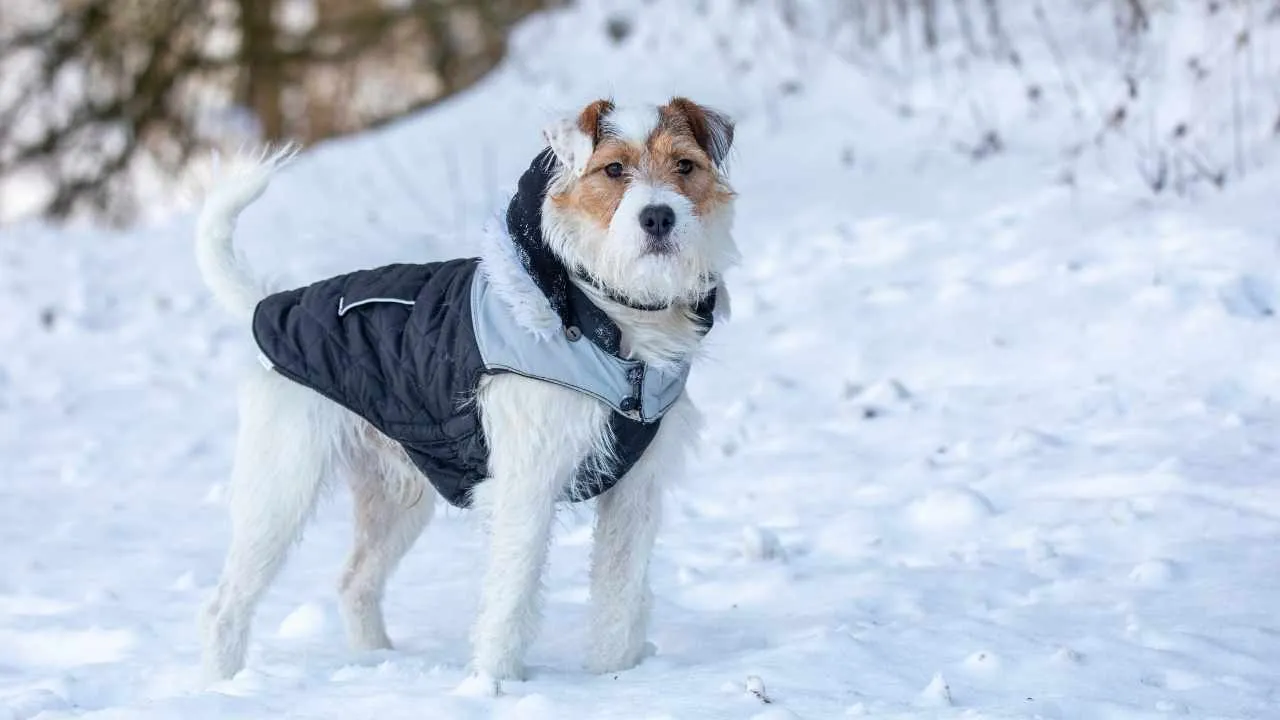
Parson Russell Terriers were bred to chase foxes from their dens, and that fiery spirit hasn’t faded. Their strong prey drive keeps them focused on movement outdoors, often making them hard to call back, as mentioned by PetMD.
Quick Thinkers, Quick Movers
These terriers often act before they think, darting toward a distraction in seconds. Their sharp instincts make them bold, restless, and sometimes too clever for their own good. It’s this combination of speed and independence that makes commands easy to ignore.
They’re also known for their restless curiosity, which often leads to challenging moments such as:
Digging through yards or gardens
Barking at the slightest noise
Chasing after small animals
Training Isn’t Always Simple
Parsons are intelligent, yet their eagerness to explore outweighs their desire to obey. Even with repetition, they may choose their own agenda rather than listen. This natural streak of independence leaves new trainers feeling like they’re negotiating instead of instructing.
A Terrier With Unshakable Spirit
Their high energy levels, paired with endless confidence, make them both entertaining and exhausting companions. A Parson who’s left without structure often creates their own mischief. Their fearless approach to life ensures they’re rarely a quiet presence in the household.
3. Siberian Husky
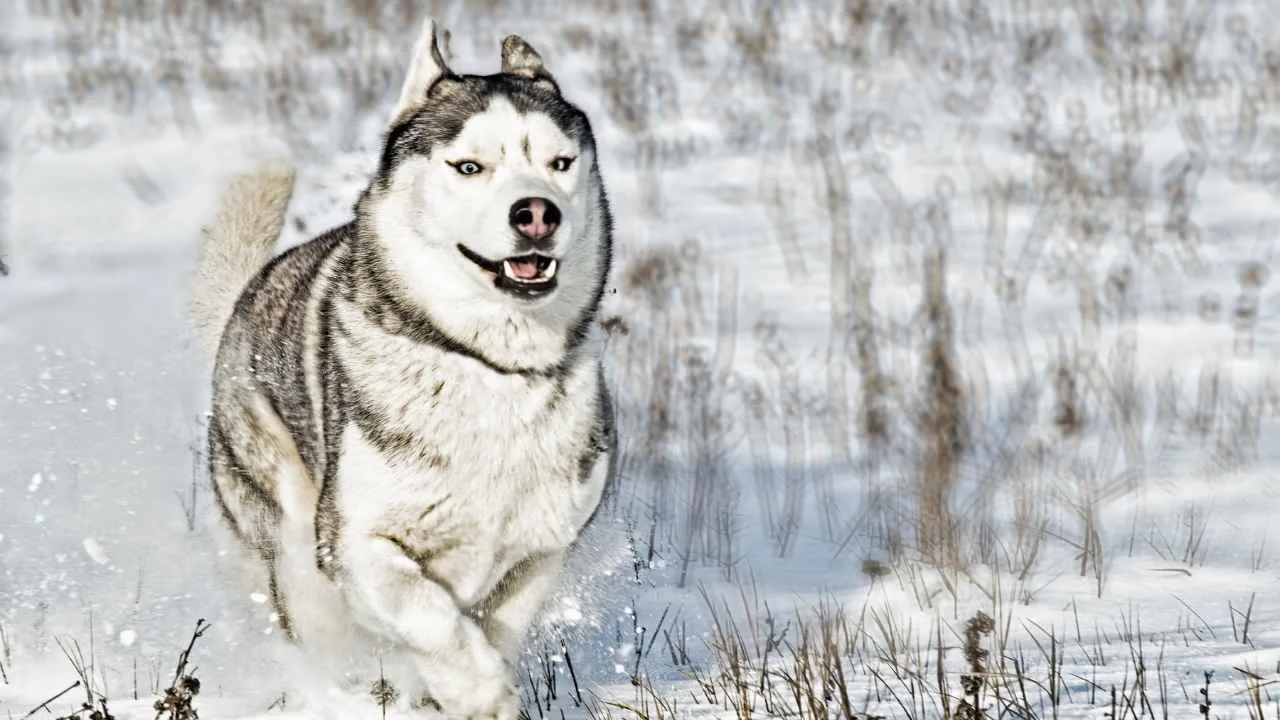
Siberian Huskies carry the spirit of explorers in their blood, bred to pull sleds across frozen landscapes. This deep-rooted drive often makes them restless in a household setting. Their boundless curiosity pushes them to test boundaries whenever they get the chance.
Stubborn and Strong-Willed
Training a Husky is rarely straightforward, as they prefer to follow their own instincts. Commands are often met with selective hearing, making consistency a challenge. This headstrong behavior is one reason they rank high among breeds known for ignoring instructions.
Quick highlights of their challenging side include:
Known escape artists often find clever ways out of yards
Persistent howling that can echo through neighborhoods
Easily distracted when their hunting instinct kicks in
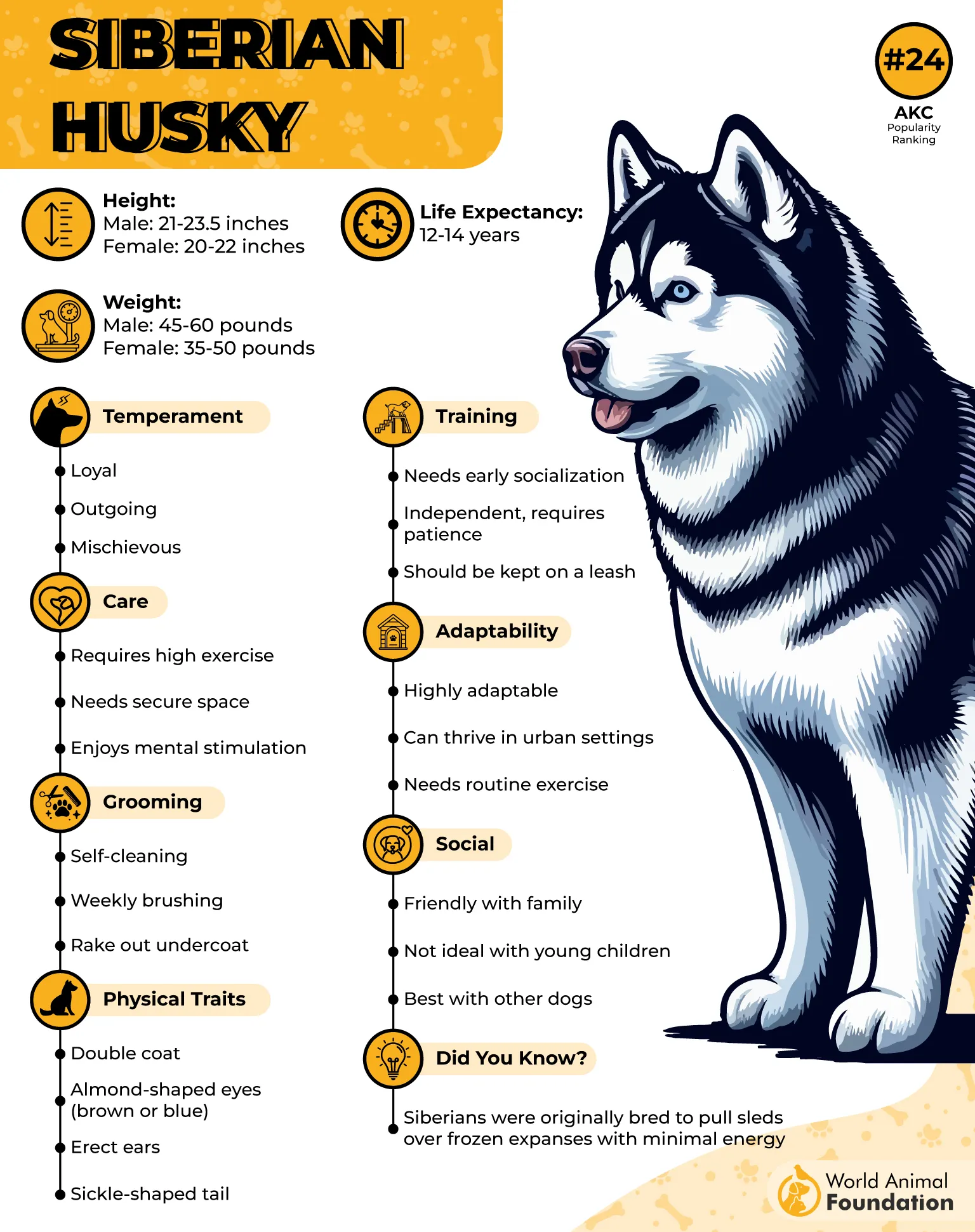
Energy That Knows No Limit
Their stamina is remarkable, a reminder of their history as sled dogs covering miles in harsh climates. Without outlets for that energy, Huskies may resort to destructive behavior indoors. Chewing, digging, or constant pacing often result from unmet activity needs, as Britannica highlighted.
A Breed That Captivates
Despite their challenging nature, Huskies remain a favorite due to their striking looks and captivating blue or bi-colored eyes. Their wolf-like appearance often turns heads, but living with them demands patience. They are a breed that keeps households busy and constantly adapting.
4. Shiba Inu
The Shiba Inu carries an almost feline independence that often surprises first-time owners. They enjoy affection but prefer it on their own terms, showing a stubborn streak when told what to do. This aloof nature makes training sessions a challenge, as they rarely perform to please.
Strong-Willed and Stubborn
Commands are often treated as suggestions with this breed, and consistency alone may not change that. Their natural intelligence means they understand what’s asked, but their willfulness makes obedience unreliable. This is why they frequently rank among the least obedient dog breeds.
Some traits that often frustrate trainers include:
Selective listening during training
Refusal to follow commands in distracting settings
An instinctive need to assert independence
Natural Hunters at Heart
Originally bred for hunting small game in Japan, their prey drive remains deeply rooted. A squirrel or rabbit can immediately steal their attention, making recall nearly impossible outdoors. This instinctive chasing tendency is another reason they often ignore their handler’s calls.
Vocal Reactions and Personality
The Shiba Inu is famously known for its “Shiba scream,” a high-pitched yelp triggered by stress, excitement, or resistance, as stated by Orvis. This dramatic reaction reflects their spirited personality, which can make them feel more challenging compared to many other breeds.
5. Akita
Akitas carry themselves with a quiet strength, often showing dominance in their daily interactions. Their heritage as powerful hunters and guardians means they prefer doing things their own way. This independent nature makes them less inclined to follow commands immediately.
Training Challenges
These dogs are intelligent but can be willful when asked to repeat tasks. They often decide whether a command is worth their attention, which can frustrate inexperienced trainers. Their headstrong personality places them among the hardest breeds to manage in obedience.

They’re also known for:
Testing boundaries with their humans
Responding selectively to instructions
Requiring firm consistency from day one
Protective Instincts at Home
Akitas are deeply loyal to their families and naturally suspicious of outsiders. This protective instinct, while admirable, can fuel their stubborn side when meeting new people or animals. Their strong will means they don’t always adjust smoothly to changes in routine.
Respect Over Repetition
This breed tends to respond better to respect-based training than repetitive drills. They appreciate structure but dislike being forced into patterns that feel unnecessary. Building trust with an Akita often matters more than issuing commands repeatedly.
6. Chihuahua
Chihuahuas are famous for their spirited personalities and quick tempers. Their small size gives them the confidence to act larger than life, which often means ignoring commands. This headstrong nature makes consistency in training a real challenge.
Selective Listening Habits
These tiny dogs often act on their own terms, ignoring cues if something else catches their attention. Their alert minds make them quick to react, but not always to commands. This trait has earned them a reputation for being clever but willfully disobedient.
Short moments reveal this best:
Barking excessively at noises others don’t notice
Refusing to follow commands when distracted
Guarding toys or food with surprising intensity
Training Challenges
Consistency is key with Chihuahuas, yet even then, patience is often tested. They may learn tricks quickly but choose when to perform them, which feels like selective obedience. Their determination requires a confident hand, especially during early socialization.
A Long-Term Commitment
Living up to 14–16 years on average, their spirited attitude lasts well into their senior years. Families often find that the same boldness that makes them difficult to train also keeps them lively for a lifetime. Few breeds carry such tenacity in such a small body.
7. Shar Pei

Shar Peis were once bred as guard dogs and farm helpers in China, which shaped their bold and self-reliant nature. That independence often comes through in daily life, where they prefer to make their own decisions. This streak of autonomy can make them less inclined to follow household rules.
A Mind of Their Own
Their stubbornness shows most when asked to obey repetitive commands. Shar Peis tend to weigh whether it benefits them before responding, which frustrates trainers who expect immediate compliance. Some traits that emphasize this challenging side include:
Selective listening during training
Quick to get bored with repetition
Preference for handling things on their own
Strong Willed Around Strangers
Shar Peis are naturally wary of unfamiliar people, a trait carried from their guarding past. This cautious attitude can sometimes make them seem aloof, adding another layer of difficulty in socialization. Consistency and patience are required to guide their protective instincts productively.
Loyalty with Limits
While deeply devoted to their families, Shar Peis do not display the eager-to-please attitude seen in more obedient breeds. Their loyalty is steady but paired with a willful edge that resists constant direction. This is why they’re often listed among the hardest breeds to train.
Conclusion
Living with these headstrong companions means patience, structure, and acceptance of their independent spirit. While they may not resemble obedient dog breeds that follow every command, they bring character and loyalty in their own way.
Unlike other dogs who thrive on praise, these breeds challenge their families to adapt. For dog owners, the key lies in consistent obedience training supported by early training and structure.
Dog training may not erase stubbornness entirely, but it builds respect and balance. In the end, these different breeds prove that difficulty often walks hand in hand with unforgettable charm.


